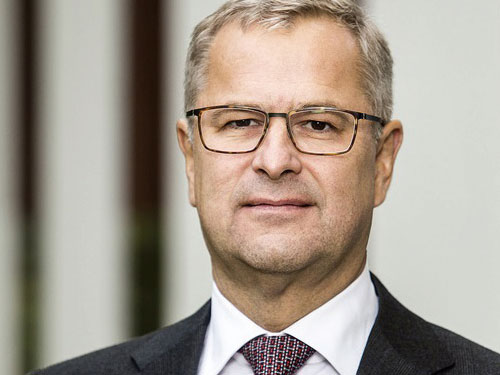Cratering crude reveals cost and environmental complications of several strategies.
The new regulations from the International Maritime Organization that went into effect January 1, 2020—mandating that seagoing vessels reduce their sulfur emissions by 80%—presented ocean carriers with several alternatives. They could switch to compliant fuels, such as low-sulfur oil products or alternative fuels such as liquefied natural gas (LNG), they could invest in exhaust gas cleaning systems known as scrubbers, or they could go about their business in a non-compliant fashion.
Of the total current daily maritime bunker demand, around 18% could be satisfied with IMO-compliant very low-sulfur fuel oil (VLSFO) this year, according to Rystad Energy, an independent research and business intelligence firm (and that figure could nearly double by 2025). Rystad estimates that another 15% of current marine fuel demand will be satisfied this year by other low-sulfur blends such as marine gas oil (MGO)—but that less than one-half of one percent will come from other fuels such as LNG. Rystad also estimated that by the end of 2020 there will be around 2,800 scrubbers installed on vessels consuming around 17% of global daily demand with high-sulfur fuel oil (HSFO) and that non-compliant vessels burning HSFO will comprise the remainder of the global fleet.
Scrubbing the Scrubber Strategy
The investment in scrubbers seemed like a genius move earlier this year, but not so much now, thanks primarily to the economic ravages of coronavirus. Before the pandemic appeared, and not surprisingly, prices of low-sulfur fuels spiked while HSFO prices sank—thanks to an anticipated cratering in demand. In early January, low-sulfur fuel was selling at twice the price of HSFO.
Which is why, according to a report from S&P Global Platts, an energy information provider, a 10,000-teu container ship deploying a scrubber and burning HSFO was saving $35,000 per day compared to a vessel burning low-sulfur fuel.

All that changed in early March when the price of crude oil crashed. By April 20 it was trading at 75% less than three months earlier. Prices for IMO-compliant fuel likewise crashed but prices for HSFO held up, dramatically reducing the price spread and the savings enjoyed by scrubber-equipped vessels.
Besides all of that, the coronavirus pandemic is causing delays in equipping ships with scrubbers. Chinese shipyards, where much of the installation is being done, are still not working at full capacity.
“Currently, only a limited number of our vessels have scrubbers installed due to delays at the yards and the situation in China,” said Maersk CEO Soren Skou on a recent call with investors and journalists, “and I think those delays are probably going to become even longer.” Ten percent of Maersk’s fleet currently consumes HSFO, Skou added, but by year end, after more scrubbers are installed, that figure could rise to 25%.

The dubious savings and shipyard delays are not the only problems with scrubbers. According to CRU, a business intelligence firm, carriers are opting for an open loop scrubber system—which washes exhaust gases with sea water and discharges them into the sea—as opposed to closed loop equipment, which involves treating waste in specialized facilities, for most of their vessels being fitted with scrubbers. Some consider closed-loop scrubbers to be more environmentally friendly and there are some regions, such as Singapore and the United Arab Emirates, where operating open-loop scrubbers is prohibited.
The use of VLSFO has also been questioned, after a German study found that the fuel releases 10% to 85% more black carbon than HSFO. That runs afoul of upcoming IMO goals, which will aim to reduce CO2 emissions by 40% in 2030 and 70% by 2050. Scrubbers also have their CO2 issues: they consume three to five percent more fuel, releasing more of the greenhouse gas.
Expensive Alternatives
Given all of the above, burning LNG might be the best option for compliance and for the environment—but retrofitting a vessel is costly. Hamburg Sud was the first carrier to retrofit a large containership for LNG—at a reported cost of $30 million.
Most carriers have not followed the lead of CMA CGM, which ordered nine 23,000-teu LNG-powered container ships, the first of which was launched last September. LNG is not reflected in Maersk’s plans, as Skou made no mention of LNG when discussing the carrier’s IMO 2020 compliance. For now, CMA CGM represents almost two-thirds of global demand for LNG, although one recent projection says LNG’s total share of the marine fuel market could climb to 40 percent in 2050—perhaps a sign of things to come.
Skou did mention, however that Maersk has “witnessed high volatility in fuel prices,” and added that the carrier implemented a new surcharge of $50 to $200 per forty-foot-equivalent unit (FEU) as of March 1.
That points to yet another problem for container carriers. A recent report from the consultancy AlixPartners found increasing shipper frustration toward the “opacity on the part of the container-shipping sector regarding its pricing, now compounded by the implementation of the IMO 2020 rule.”
This perception says the study, is likely to lead to new pressure on container carriers to reform and standardize how pricing and fuel bunker adjustments are calculated. “Carriers could see their hard-fought financial gains of recent years totally evaporate if they fail to control costs,” said Esben Christensen, an AlixPartners managing director, “including how they manage fuel costs and customer expectations around fuel costs.”
Here again, IMO 2020 compliance comes into play. Besides the possibility of installing scrubbers, Christensen added, carriers also need to consider “other longer-term factors, such as whether smaller and more-remote ports might be challenged to secure adequate low-sulfur fuel supplies.”




